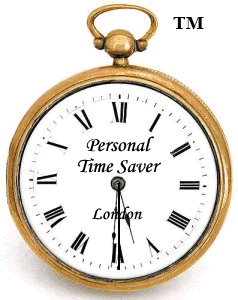
There is no shortage of people seeking to turn ghosts into gold and spooks into silver. Hundreds of amateur ghost-hunting groups across the country offer tours of local haunts, allegedly spirit-infested hotels, mansions, cemeteries, and so on.
Ghosts generate a lot of green.
One of the most enterprising ghost entrepreneurs is an artist named Josh Bond, who lives in the tiny New Mexican town of Cuchillo. Bond is offering a genuine haunted house for sale - on eBay.
Genuine ghost town
With a population of 35, Cuchillo is almost literally a ghost town. The house Bond lives in was built around 1830, when Andrew Jackson was president, a young Charles Darwin would soon sail toward the Galapagos, and the age of railroads was just beginning. Since then the Old Cuchillo Bar and Store served as a post office, mercantile shop, saloon, and boarding house.
Most of that is gone now - a victim of age and a 2000 fire - though some say that the spirits of countless travelers remain.
Bond purchased the buildings several years ago and began the difficult and expensive task of restoring them. To raise money, he is offering one of his haunted buildings for sale on eBay: a three bedroom, one bath home built around 1890. The home's thick adobe (mud brick) walls and hardwood floors are confirmed. The ghosts are another matter.
The auction (number 180414565873, in case you're interested) ends, appropriately enough, on Halloween; bidding started at $10,000, and the price has since doubled.
Inside the haunted house
According to Bond, at least three different amateur ghost-hunting groups visited the buildings and found mysterious phenomenon, concluding the area is haunted. (It should be noted that when a ghost hunter calls some phenomenon unexplainable, it simply means they can't figure out the solution to a mystery-not that there is no explanation.)
In July, I investigated the haunted residence Bond is selling, conducting an overnight vigil in search of spirits or anything supernatural. Despite long hours patiently waiting for some paranormal to happen, the ghosts were a no-show.
There were a few unnerving moments around the witching hour when a slow, low creaking sound echoed throughout the house-followed by a leaden thud, then more creaking. Flashlight in hand, I soon traced the sound to an exterior door swaying in the night wind. Of course it's possible that the ghosts overheard my conversations with Bond and knew I was a scientist and skeptic, and refused to appear for me just out of spite.
Whether I - or less skeptical ghost hunters, for that matter - think a ghost haunts the Old Cuchillo Bar is irrelevant. Bond is convinced that some unknown presence lives alongside him, and if the online auction goes well, the ghosts (real or not) may help save a historical landmark.
Benjamin Radford/LiveScience.com
Ghosts generate a lot of green.
One of the most enterprising ghost entrepreneurs is an artist named Josh Bond, who lives in the tiny New Mexican town of Cuchillo. Bond is offering a genuine haunted house for sale - on eBay.
Genuine ghost town
With a population of 35, Cuchillo is almost literally a ghost town. The house Bond lives in was built around 1830, when Andrew Jackson was president, a young Charles Darwin would soon sail toward the Galapagos, and the age of railroads was just beginning. Since then the Old Cuchillo Bar and Store served as a post office, mercantile shop, saloon, and boarding house.
Most of that is gone now - a victim of age and a 2000 fire - though some say that the spirits of countless travelers remain.
Bond purchased the buildings several years ago and began the difficult and expensive task of restoring them. To raise money, he is offering one of his haunted buildings for sale on eBay: a three bedroom, one bath home built around 1890. The home's thick adobe (mud brick) walls and hardwood floors are confirmed. The ghosts are another matter.
The auction (number 180414565873, in case you're interested) ends, appropriately enough, on Halloween; bidding started at $10,000, and the price has since doubled.
Inside the haunted house
According to Bond, at least three different amateur ghost-hunting groups visited the buildings and found mysterious phenomenon, concluding the area is haunted. (It should be noted that when a ghost hunter calls some phenomenon unexplainable, it simply means they can't figure out the solution to a mystery-not that there is no explanation.)
In July, I investigated the haunted residence Bond is selling, conducting an overnight vigil in search of spirits or anything supernatural. Despite long hours patiently waiting for some paranormal to happen, the ghosts were a no-show.
There were a few unnerving moments around the witching hour when a slow, low creaking sound echoed throughout the house-followed by a leaden thud, then more creaking. Flashlight in hand, I soon traced the sound to an exterior door swaying in the night wind. Of course it's possible that the ghosts overheard my conversations with Bond and knew I was a scientist and skeptic, and refused to appear for me just out of spite.
Whether I - or less skeptical ghost hunters, for that matter - think a ghost haunts the Old Cuchillo Bar is irrelevant. Bond is convinced that some unknown presence lives alongside him, and if the online auction goes well, the ghosts (real or not) may help save a historical landmark.
Benjamin Radford/LiveScience.com



















































